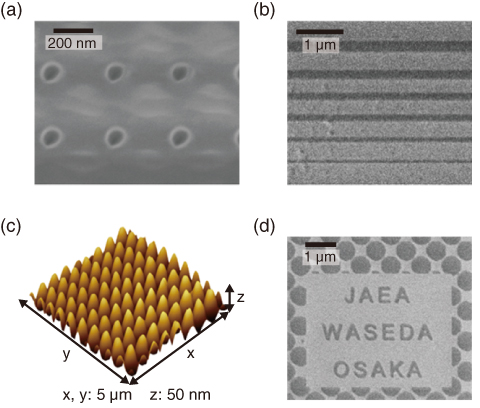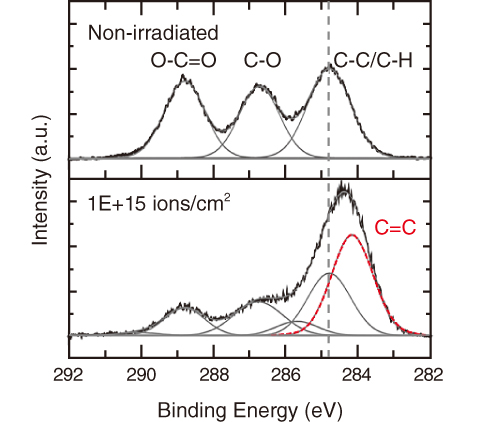
Fig.5-6 Microfabricated poly (L-lactic acid) using focused ion beam

Fig.5-7 Chemical bonds on the fabricated bottom of poly (L-lactic acid) measured by X-ray photoelectron spectroscopy
Micro/nanofabrication techniques for fabricating biocompatible materials are essential for the development of devices used in advanced medical treatment and biological research. Biocompatible materials have low heat and chemical stabilities; therefore, they cannot be precisely fabricated by any standard method. Here we developed a new technique for the micro/nanofabrication of biocompatible plastic, which exhibits locally high cell adhesion, using a focused ion beam (FIB).
As the target material, we selected poly (L-lactic acid) (PLLA), a highly biocompatible and biodegradable polymer. PLLA is typically used in medical applications such as implants and sutures that are degraded and absorbed by the body after healing. The irradiation effect on the surface modification of PLLA was investigated using 30 kV Ga FIB. The heat induced by FIB irradiation enhanced the diffusion and desorption of the decomposed PLLA fragments. On the other hand, fabrication accuracy was reduced by the thermal deformation of the heat-unstable PLLA. To increase fabrication precision, we reduced the thermal deformation by optimizing the sample preparation and irradiation conditions, such as the dose, dose rate, PLLA thickness, and beam diameter. Micrographs of successfully fabricated microstructures, such as fine holes, grooves, and alphabets, are presented in Fig.5-6.
Fig.5-7 shows the X-ray photoelectron spectra of the C1s in PLLA before and after irradiation. It appears that the PLLA surface was directly carbonized and became C=C-bond rich. Because decomposed fragments such as H2, CO2, and CH4 were physically sputtered and desorbed to/from the PLLA surface, the surface gradually became similar to a diamond-like carbon (DLC). The number of C=C bonds is known to strongly affect cellular adhesion to DLC surfaces. Thus, the surface modification technique can be used to control cellular adhesion onto PLLA.
This micro/nanofabrication technique was achieved by merging fine processing and material modification techniques. It is potentially applicable to the manufacture of biocompatible devices, such as micromachines and lab-on-a-chip, used in tissue engineering and bio-research to enhance the longevity and well-being of society.
The present study was accomplished in collaboration with Osaka University and Waseda University.